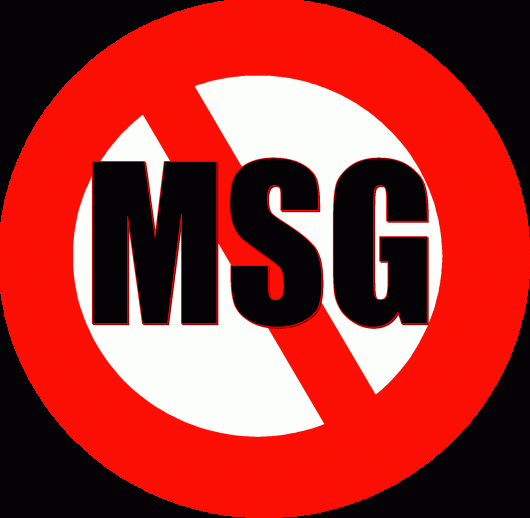What is Monosodium Glutamate (MSG)?

Monosodium Glutamate, or MSG, became super popular because it enhances the flavor of processed foods. It makes food smell and taste better, you know, more like actual food. Unfortunately, MSG is very bad for your health, and I can only hope that after learning more about the harmful effects it has on your body, you will agree that the “because it tastes good” excuse just doesn’t cut it anymore.
What is Monosodium Glutamate?
MSG is an “excitotoxin”, which means it over excites your cells to the point of damage or death. MSG has been proven to cause the following health problems:
• Burning sensation
• Chest pain or difficulty breathing
• Depression
• Drowsiness
• Eye damage
• Facial pressure or tightness
• Fatigue and disorientation
• Headaches
• Numbness
• Nausea
• Obesity
• Rapid heartbeat
• Tingling
• Weakness
U.S. Food and Drug Administration – APPROVED
This man made ingredient can’t be approved by the FDA (you know, the guys who are here to protect us!), right? Wrong. In 1959, the U.S. Food and Drug Administration (FDA) labeled MSG as “Generally Recognized as Safe” (GRAS) . The FDA also admitted that MSG has been shown to result in nerve cell damage in the brain.
“Studies have shown that the body uses glutamate, an amino acid, as a nerve impulse transmitter in the brain and that there are glutamate-responsive tissues in other parts of the body, as well.
Abnormal function of glutamate receptors has been linked with certain neurological diseases, such as Alzheimer’s disease and Huntington’s chorea. Injections of glutamate in laboratory animals have resulted in damage to nerve cells in the brain.” –
U.S. Food and Drug Administration (emphasis added)
In addition to damaged brain cells, MSG can also cause sudden death – even to young and healthy athletes.
“When an excess of food-borne excitotoxins, such as MSG, hydrolyzed protein soy protein isolate and concentrate, natural flavoring, sodium caseinate and aspartate from aspartame, are consumed, these glutamate receptors are over-stimulated, producing cardiac arrhythmias.
When magnesium stores are low, as we see in athletes, the glutamate receptors are so sensitive that even low levels of these excitotoxins can result in cardiac arrhythmias and death.” -Dr. Blaylock
Why We’re Still Eating MSG
Big food manufacturers know that consumers are getting smarter about what’s on the ingredient lists, and they know that we’re trying our best to avoid MSG! So what did they do? They tried to hide the fact that MSG is an ingredient on their product by using different names that would never be associated with MSG.
Here’s the loop hole that food manufacturers use: They don’t have to label ingredients that contain free gluamic acid – even though that’s the main component of what makes up MSG! In addition to the over 40 ingredients that contain glutamic acid, some foods form glutamic acid during processing – which won’t show up on the ingredient list!
The Many Names of Monosodium Glutamate (MSG)
When I first started avoided MSG, I would look for the full name (Monosodium Glutamate) on the ingredient list or find a claim saying “No MSG”. Unfortunately, MSG has MANY names on ingredient lists, which just means you need to become an educated and savvy shopper.
Avoid all of the following ingredients, since they are synonyms of MSG or similar to MSG:
Acid hydrolyzed vegetable protein
Acid-hydrolyzed vegetable protein
Autolyzed Yeast
Glutamate
Glutamic acid
Hydrolyzed corn protein
HVP
hydrolyzed casein
hydrolyzed collagen
hydrolyzed collagen protein
hydrolyzed corn
hydrolyzed corn cereal solids
hydrolyzed corn gluten
hydrolyzed corn gluten protein
hydrolyzed corn protein
hydrolyzed corn soy wheat gluten protein
hydrolyzed corn/soy/wheat protein
hydrolyzed cornstarch
hydrolyzed gelatin
hydrolyzed milk protein
hydrolyzed oat flour
Hydrolyzed Plant Protein
Hydrolyzed Protein
hydrolyzed soy
hydrolyzed soy protein
hydrolyzed soy wheat gluten protein
hydrolyzed soy/corn protein
hydrolyzed soy/corn/wheat protein
hydrolyzed soy/wheat gluten protein
hydrolyzed soya protein
hydrolyzed soybean protein
hydrolyzed torula and brewers yeast protein
hydrolyzed vegetable protein
hydrolyzed vegetable protein powder
hydrolyzed wheat
hydrolyzed wheat gluten
hydrolyzed wheat gluten protein
hydrolyzed wheat protein
hydrolyzed whey and casein protein
hydrolyzed whey peptides
hydrolyzed whey protein
hydrolyzed whey protein concentrate
hydrolyzed whey protein isolate
hydrolyzed yeast
hydrolyzed yeast protein
Monosodium Glutamate
MSG
partially hydrolyzed beef stock
partially hydrolyzed casein
partially hydrolyzed guar gum
partially hydrolyzed soybean
partially hydrolyzed soybean oil
partially hydrolyzed whey protein
Plant Protein Extract
Textured Protein
Yeast Extract
How To Avoid MSG
There are a couple of ways that you can avoid consuming MSG. First of all, check all of the ingredient lists for the ingredients listed above and don’t buy or eat them! Of course, that’s a very long list of ingredients to try and avoid. The easiest way to avoid MSG in your diet is to avoid all processed foods. Stop buying canned produce and start buying more fresh produce. Instead of buying cream of mushroom soup, learn how to make it from scratch – with fresh ingredients!
I suggest making small steps toward your overall goal. One step at a time, you can move forward with your health!
Feel free to follow us, however you like: Google+, Facebook, Twitter, Pinterest, Instagram
